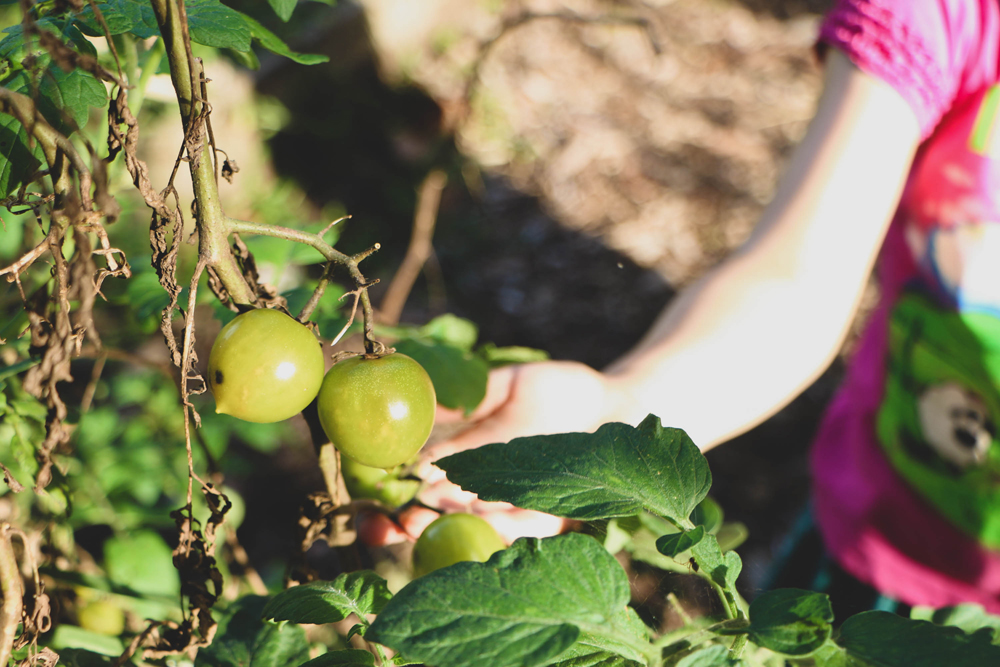Young children in many early childhood settings around the world are demonstrating awareness of their impact on the environment and ways to minimise it. A five-year-old in Ireland reportedly explained to an international research group that sustainability means ‘to save the world for later’ (OMEP Congress, Sweden, 2010), yet many adults still grapple with sustainability terms and practices and whether we should be teaching this sort of content to young children (Cutter-Mackenzie & Edwards, 2006).
– Every Child – Vol. 18 No. 3 2012 Sustainability and intentional teaching in early childhood
Our recent social climate has seen a movement towards becoming increasingly sustainable in our practices. We are becoming more aware of the impact that we are having on the environment and in turn the impact that this may have on our future. So who are the best people to teach these sustainable practices to? Our children of course!! The children of today will be responsible for the future of tomorrow and we can begin embedding these practices from a very early age.
These days, sustainability means more than just paper recycling; it has become a broader state of mind. We need to consider developing a respect and appreciation for the natural world and adopt an attitude towards waste that acknowledges that not everything can just be used and thrown away. This can feel challenging at times, especially in societies where we live in such abundance, as we need to begin by first changing our own practices in order to instil them in our children. We are fortunate to have a wealth of information available and resources to support these practices so hopefully this post will provide you with a little inspiration so that you can begin your sustainability journey with children today.
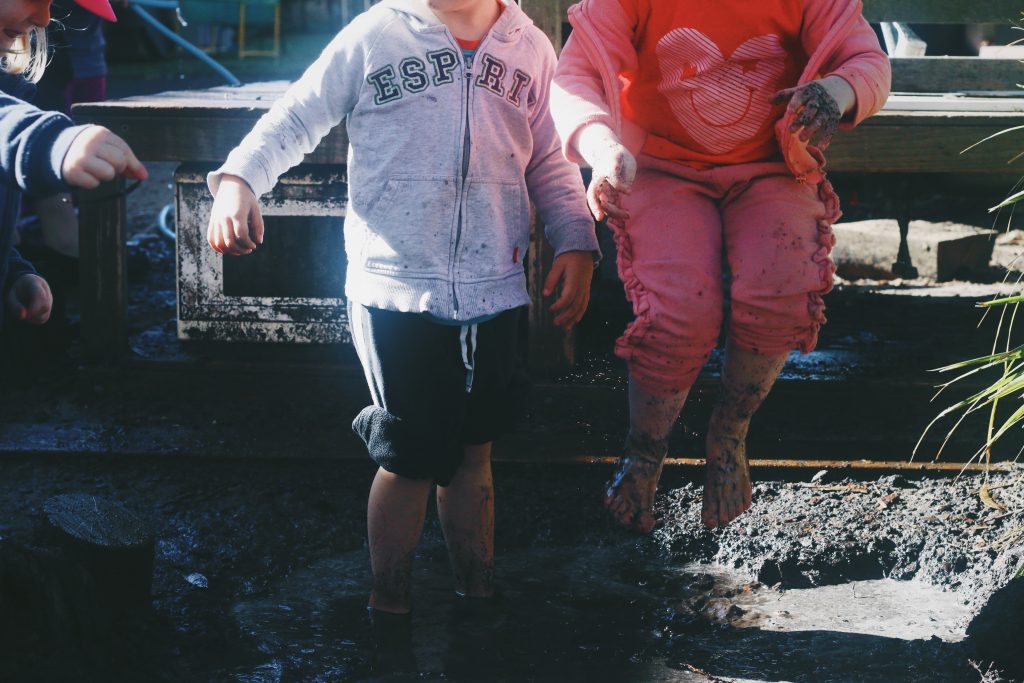
Never too young
So when should we start instilling sustainable practices in our children? Well the truth is that they are never too young to begin connecting with nature. Time spent in the outdoors, even as tiny babies, can begin their relationship with nature. Watching the clouds drift through the sky, feeling the grass with their toes and fingers, or observing the insects and birds in the garden are the very first steps we can take. As our children grow and develop, we begin to move from simply observing to becoming actively involved in nature. Going for bush walks, gathering sticks and shells and using these in their play are all wonderful foundations for working towards a sustainable future.
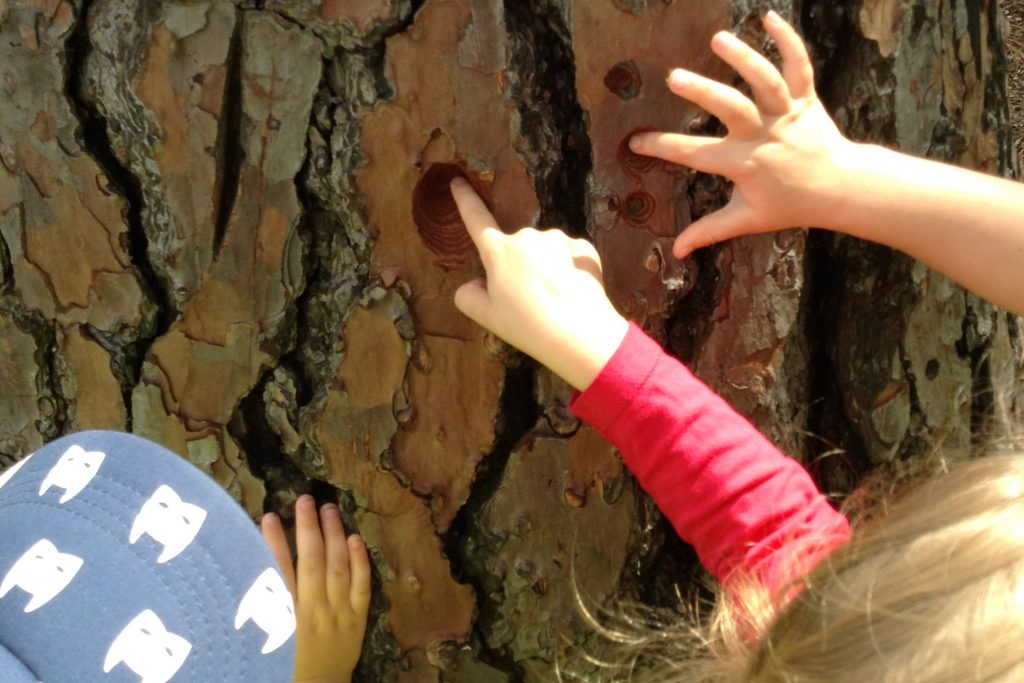
Connecting with nature
Children of all ages need opportunities to connect meaningfully with nature. These connections and time spent outdoors develop this positive attitude towards nature which fuels their desire to look after it. We can then begin discussing the impact that our actions can have on this place that they value. Very young children can often be observed picking up rubbish that others have left behind as they become aware of the impact this has on animals and ecosystems. Connecting with nature does not only have to happen in the outdoors. Bringing natural items indoors is a wonderful way to continue fostering this love and appreciation for the natural world. Having plants indoors that children can care for is a great way to get them involved in nature, as well as having a positive impact on air quality. Children can engage in projects and research about the animals that inhabit their local communities and beyond. These discussions bring them closer to the natural world while also allowing them to engage in critical thinking. Learning about spiders, bees, whales and endangered species allows children to begin to understand our responsibility for protecting wildlife.

Carefully select resources
The resources we select for children can have a great impact on our commitment to sustainability. As role models for our children, we can begin by selecting resources that firstly, are made from sustainable materials, and secondly promote sustainable practices for our children. Here are some factors to consider:
- Making the shift towards wooden resources instead of plastic. These items not only represent natural elements but can also be upcycled when they become tired or old and are less likely to end up as landfill.
The items we purchase, from chemicals to paper should be environmentally friendly wherever possible. Making the shift to recycled toilet paper and tissues is just one example of actions we can take to reduce waste. - Choosing loose parts and items that can be used and reused that either come from nature or are made with recycled materials. Shells, leaves, stones and sticks can be wonderful in construction and creating. When used in transient art experiences they can be used and reused to create an array of art pieces.
- Collecting recycled materials for the arts can be another avenue, however we must also be careful to encourage our children to choose these items carefully to again move our mindset away from abundance and over indulgence.
- Clay is a wonderful tool and resource for children as it is not only derived from natural elements, but can also be used and reused multiple times.
- Mud, glorious mud is such an attractive resource for the outdoors. Children are instantly drawn to mud and the possibilities for play are endless. This resource is another great one that is not only sustainable in nature, but also promotes a love of nature and the outdoors.
With all this in mind, we should also consider how many resources we have available to our children. It can be tricky to find the delicate balance between having enough for all children to engage, but not so much that children develop wasteful attitudes towards them. Take a minimalist approach where possible and choose items that are open-ended as they offer many more opportunities for learning and can be used in different learning environments.
Useful Resources
Sustainability: Using Less Plastic Big Book
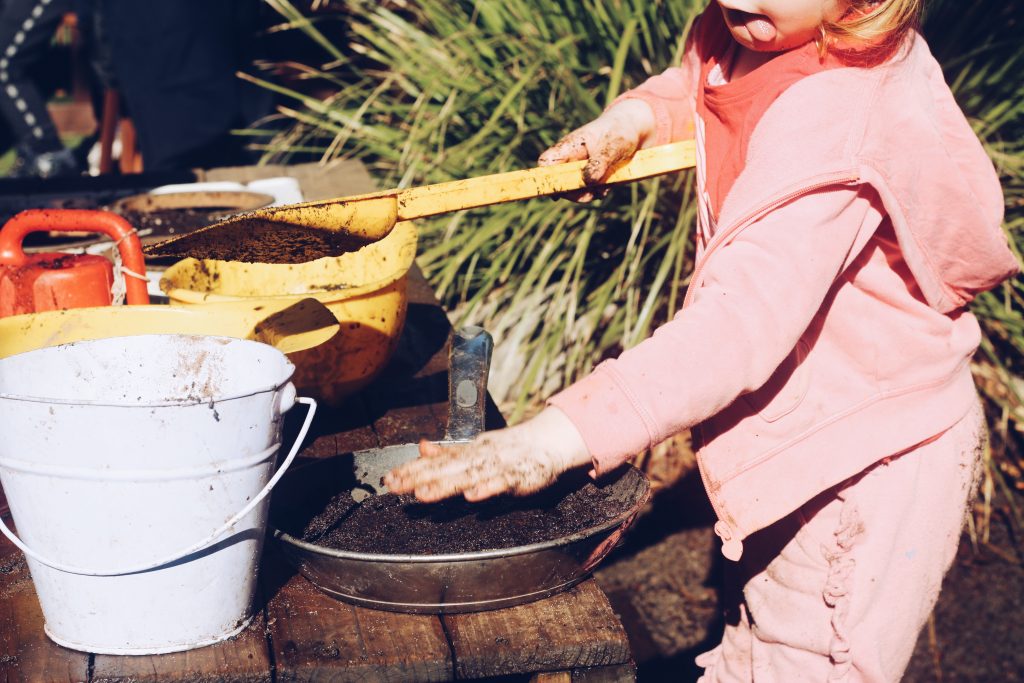
Get children in the garden
What a wonderful learning experience it can be to spend time growing plants and vegetables in the garden. No matter what your own experience is, gardening can be beneficial for all ages. Herbs can be one of the simplest and easiest plants to begin with and are a delight for the senses. They often do not take long to grow and only need a small space for planting. Once fully grown, herbs can then be used in not only cooking, but also in sensory play experiences for children such as creating herb-scented playdough. Some other easy-to-grow vegetables include tomatoes, cucumbers and strawberries, although those that feel more adventurous can grow pretty much anything. There are an array of different planter boxes and tubs that suit spaces of all different shapes and sizes making this sustainability practice suitable for the home, childcare service or school. It is wonderful when completed in collaboration, as it really fosters a great sense of community and belonging.
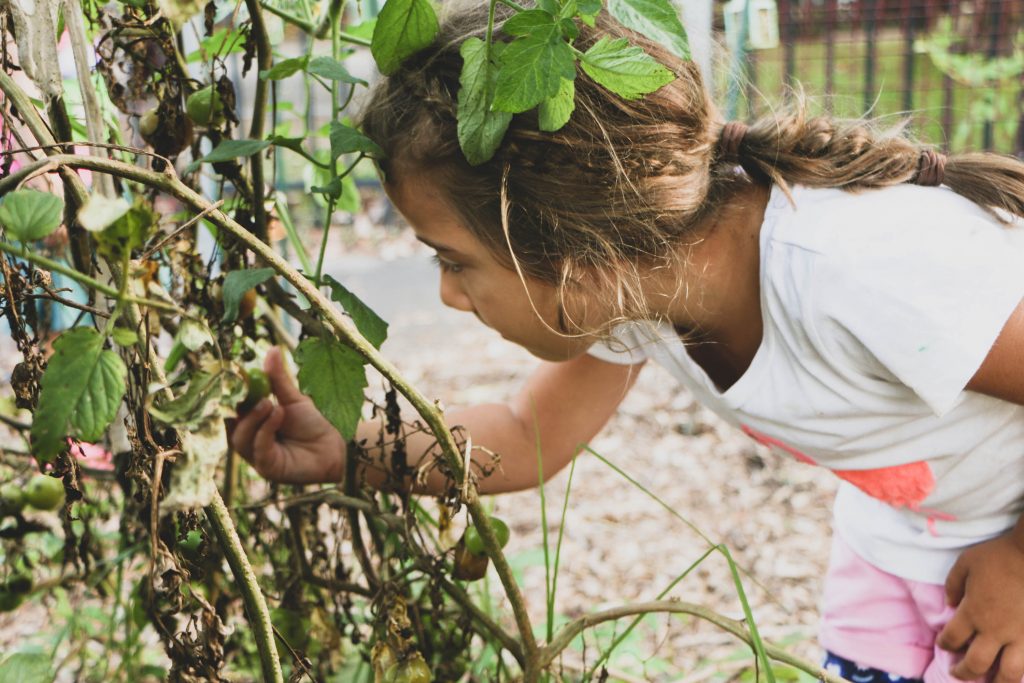
Children involved in these processes can begin to develop an appreciation for where food comes from and the process it takes to grow and harvest these foods. This fosters positive attitudes towards healthy foods as whatever can be grown in our garden is a great source of food for little growing bodies. Children are also more likely to try something if they have been involved in the process of growing it themselves. There are many amazing products out there that make gardening available for pretty much anyone. Check out some great products from MTA including their child-sized watering cans (not too heavy on the arms), plant pots and hangers (great for any space), trowels and shovels, gloves and rakes. These child-sized items make them appealing and easy to use for children making them eager to get involved!
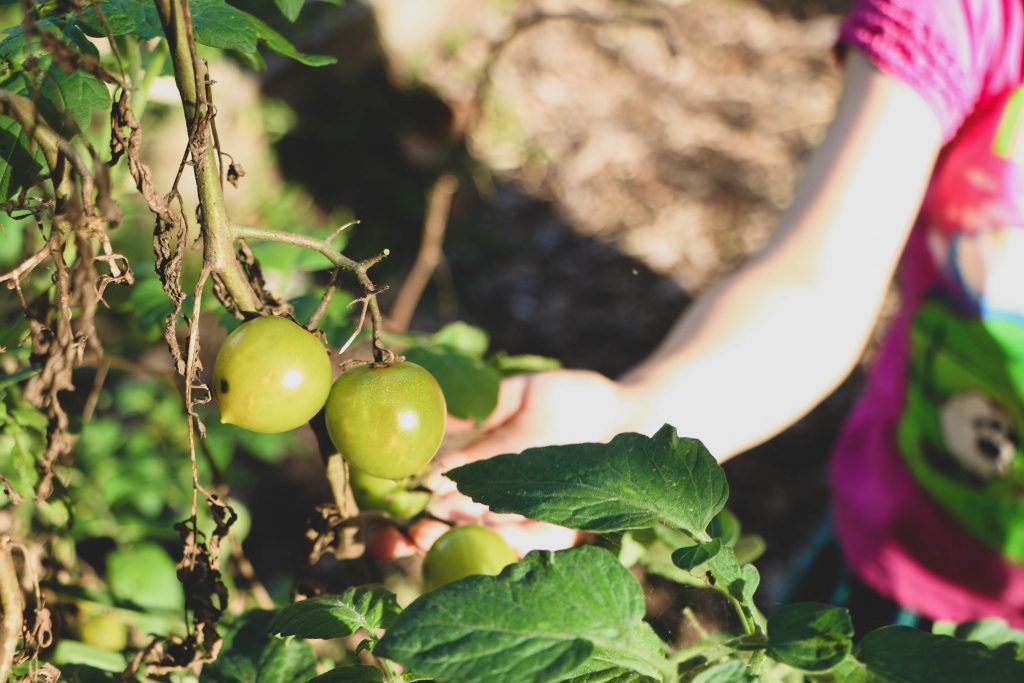
Involve children in a sustainable cause
You may be surprised how strongly children can respond to information about environmental causes. Engaging them in discussions about matters that impact their world not only sets a foundation for critical thinking, but also empowers them to realise that together we can generate change. It may be simply reducing plastic bag usage or working towards saving an endangered species. Schools and early learning services can often begin these discussions and soon realise that children become curious and even passionate about producing positive change.
Discuss waste with your children, let them consider that not everything is disposable and that every item we purchase, consume and come into contact with can have an impact on our environment.
Useful Resource:
Waste: What Happens To Our Rubbish Big Book

Set up your environment to promote sustainability
When creating our environments, from early childhood services to the home, we send a message about our values and beliefs. In order to be truly committed to sustainability, our environments should reflect this commitment and represent our embedded practices. Consider some of the following when creating an environment for children:
- Use natural elements wherever possible.
- Get yourself a compost bin or worm farm as this is not only great for the environment but something the children can become easily involved in. They can become conscious of waste as they take the scraps out to the compost bin and see how the castings created can also provide a rich soil for our new plants to grow. What a wonderful cycle of sustainability!
- Use rain water tanks for mud and water play that is accessible to children and also allows them to notice that once this water runs out they will need to wait for more. A great opportunity to teach and discuss water conservation.
- Recycling bins from the classroom or home to outdoors where children can really consider which items can be recycled and those that will become landfill. Source as many types of bins as you can from plastics to vegetation.
- Offer messages to families and the wider community. These can be displayed on notice boards or sent out via email as we work towards becoming a community that practises sustainability.
Useful Resources:
Waste: Composting Big Book
Worm farm
Recycling bins
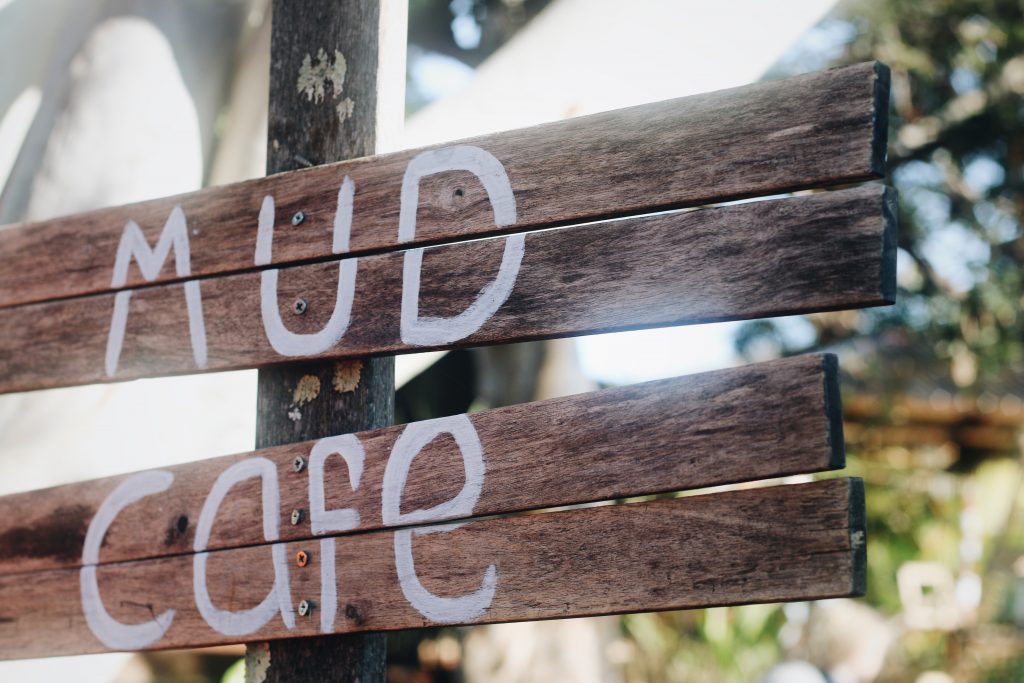
There is no denying that we need to include sustainable practices as part of our interactions with children. It is something that can be included in almost any aspect of teaching and learning as long as we adopt the right attitudes towards this ourselves. Simply by making a few little changes, you can create fun ways to engage in sustainable practices with children that will benefit us today, tomorrow and in many years to come. What changes will you make today?
Here are some great links that promote critical thinking about sustainability and offer ideas on how we can become more sustainable:
Eceen:
https://eceen.org.au/links.htm
Cool Australia
https://www.coolaustralia.org/curriculum-materials/

